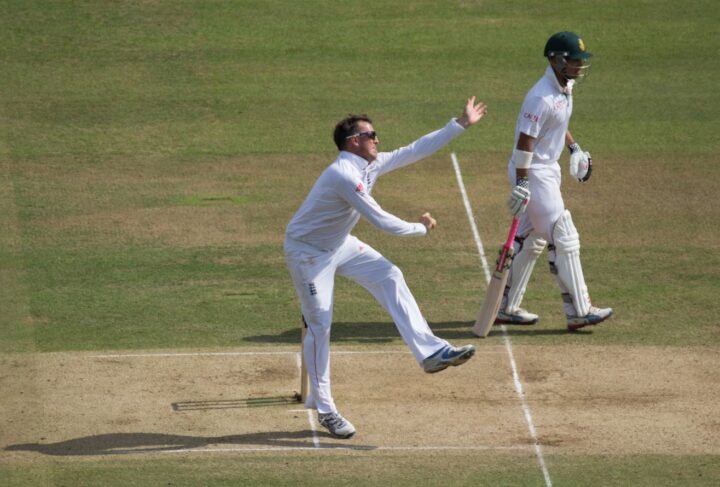Batting’s hard. Some people make it look easy, but it is hard.
I wouldn’t be telling you this if I didn’t know it myself already – I used to be an orthodox left-arm spinner for the local club as a teenager, you see. I would bowl for hours on end with bandages on my finger to prevent the skin from peeling off, and I would dread close-in catching practice because of the (justified) belief that the balls coming my way could take off my head if I wasn’t careful.
But no, batting was the hardest part of it all.
There’s a reason part-time bowlers are more popular than part-time batsmen. The latter come out in the form of nightwatchmen sometimes. I myself was sent out as a pinch-hitting opener in an intra-club game once. I turned out to be the second-last batsman to get dismissed.
I was so young back then I didn’t even know how to place my feet at the crease. But those who did got out anyways. It was a collapse, with my holding up one end to score nine runs at the other end. It was the highest score in the innings, with all my runs coming through singles. Almost every time I took a single though, my partner somehow got himself out.
It was while I was watching Dan Lawrence rush into his forties with just a couple of wickets left that I realised why I’d survived for as long as I had on that day. I wasn’t truly batting. Well, not in a way which would satisfy my coach who certified me as the frontline spinner and the ‘No11 of No11s’. I was slogging.
Lawrence knows how to bat better than me – it’s probably the reason why he’s an international cricketer and I’m not. But there’s something about the art of slogging which intoxicates the batsman as much as it frustrates the purists of the game. It brings the best in the business down to the level of amateurs like me.
Planting your feet out and swiping across the line in the hopes of putting the ball over cow corner isn’t the smartest way to sustain yourself at any level of the game. Admittedly, sometimes all your slogs are top-edges which gift you a single because the ball fell into the sole gap on the off side. And sometimes, all of them go out of the ground and your cameo’s hailed as the greatest in the history of cricket.
But slogging’s slogging. You try adding finesse to it – with a compact backlift and more assured footwork down the ground – and the cricketing gods will drag you back to humility sooner rather than later. When Lawrence ventured out of the crease on 46, intoxicated by the success his swipes had brought him in the past couple of overs, he found the ball slip past him without notice. Pant 2.0 (who can keep to spin all of a sudden!) duly collected the ball and filed Dan’s wicket away for the scorers to record as stumped.
Spinners will do that to you – if you keep stepping down with the intention of slogging your way out of their business, they’ll get you to pay your interests before you bankrupt them. It doesn’t really matter if a No11 like me gets out slogging. We’re supposed to be doing that anyways.
But when your entire team – a squad of elite professionals – keeps reverse sweeping across the line in the hopes of outwitting the side with the world’s best spinners, you’re going to end up becoming the punchline yourself. England have transformed from a unit full of in-form elites to a collection of walking wickets with less subtlety than the kind of tailenders who plant out their feet for a slog before the ball’s even been delivered. In neither case is the result too pretty.

This is not to say some people can’t slog better than others. When I woke up today morning, I was greeted by the news that Keiron Pollard had hit six sixes in an over. It was a T20I – and it presented a chase even crazier than what the format usually likes to keep in store for us. He’d hit the six sixes off someone who had taken a hat-trick in the previous over.
I’ve been an admirer of Pollard courtesy his association with my favourite IPL team – the Mumbai Indians – and this single over spoke more about the evolution of the game than I ever could. Every single delivery was slogged – most of them ended up on the periphery of the ground’s outer edges. No one slogs it better than Pollard, after all. And modern cricket wants him to.
But heavy bats and scrambled minds can only get you so far. As with most substances which intoxicate you, there isn’t anything inherently wrong with slogging. No, as I said, it’s as entertaining as anything else if you allow yourself to set aside the purist within you.
But you need to be in control of your batting. I’ve developed myself into a street cricketer who plays the tennis ball with more solidity than the deuce ball – probably because the former is less likely to take off my head. But when I slog, there still isn’t too much of a method behind my madness. It’s instinctual cricket, and it serves me well because I don’t need to play any better than that.
But when England crumbled to another poor score of 205 today, never did they look in control as much as they looked at sea, unwilling to send out an SOS signal because they’re under the illusion there’s rescue nearby. There’s going to be no easy answers when they return back home, having squandered their 1-0 lead after the first Test. And the inquest which follows won’t allow them be in control of their own fates either.
There’s a batsman in the opposition who slogs as well as anyone else in the game right now. Lo and behold, the world’s most entertaining keeper-batsman of his generation – Rishabh Pant. He hits bowlers out of the rough. He steps down the ground and almost always meets the trajectory of the ball. He’s also starting to win matches for India from positions where England would always lose them.
What’s the difference between him and the Englishmen, then? He’s got a bit of Pollard in him, I’d like to believe. There’s modern bats and modern mentalities, but nothing can outweigh the temperament which he’s developed. He no longer plays some outrageous shots against the red ball, having shelved them away on the insistence of the management. And he tries his best not to swipe against the turn either, no matter how tempting the length is.
He’s a slogger. There’s no two ways about it. But he now trusts his defence when he needs to, which means he’s also attained more freedom to hit the boundaries when he wants to.
That’s the fundamental difference between the opposition and Pant. Both slog – but only one of them’s ever truly in control of their game against spin.
Abhijato Sensarma









Mike
I agree with you. On this basis he would have Trescothick – who planted his feet but played down the line – and Greig, who played the quicks with hard hands so that top edges were more likely to clear the slips – as sloggers, whereas they (and in Tresco’s case, his coach) were players who thought about their game.
Got out slogging?… adopt the Merv Hughes’ line when caught in the deep with his team desperately trying to save the game….
“Sorry skip, got a good one!”
Shades of Robin Marler : sent in as night watchman and out for 6 – second ball !
The cow corner slog has become a practiced stroke with the proliferation of T20 these days. Bowlers bowl deliberately to encourage it, challenging players to hit across the line to find spaces in the field. This means batsmen are more adept at practicing and playing it, though as you say it still has the feel of ‘here goes nothing’ about it where you almost expect a wicket. Heavy bats are certainly a factor with gym bodied players miss-hitting sixes. Even the slender Root is capable of this. It is strange though that when a batsman swings the ball over mid wicket it’s a slog yet when he plays inside out and slashes one over cover it’s considered a great piece of improvisation.
These factors are even more prevalent in baseball where the cross batted swipe is the norm, it being the most natural way to wield a bat, though they try to hit the ball straighter.
Could you let me know what parts of the article (specifically) gave you this impression? I completely disagree and I don’t understand how you could have reached this conclusion. Was it the casual reference to liking an IPL franchise? It’s perfectly possible to watch, enjoy, and understand all forms of the game.
The main point is that pure slogging gets you into trouble. Attacking cricket is only advisable if you’ve got a sound defence too. I don’t see how this is controversial or shows that you only understand white ball cricket. I would’ve thought that the polar opposite is true.
Just watching the England batsmen in the last Test, it seemed clear to me that England’s batsmen (Sibley was a prime example) went for unsightly hacks because they thought every ball had their name on it and they didn’t trust their defensive technique to survive.
The difference, with India’s century-maker today – and this article was prophetically written yesterday before Pant’s ton – is that Pant trusts his method. He knows what he’s doing. He’s not slogging because he wants to get a few runs before he inevitably receives a ball with his name on it. He’s taking calculated risks and choosing his moments, knowing that he can block in the meantime. At least that’s my reading of the situation.
So you would say that the likes of Ashwin and Pant have sound defences. Pant certainly played a variety of slogs, intermingled with some properly decent shots, but this summer will find his dodgy technique out. Attacking cricket is a state of mind more than a sound technique. If you’re comfortable playing that way you’ll be positive. Lawrence and Sibley particularly are not, though Crawley looks more so, but that doesn’t mean he has a better technique. What it does mean is if he makes up his mind to play in that vein he’ll not vaccillate and get caught in two minds and play in a premeditated fashion. Incidentally as a former player you must agree that it is the players, who as the ones who have to play on that pitch, judgement that is more likely to be accurate as to its vagueries ove the spectators. We saw a number of Indian batsmen play in much the same vein throughout the series. Each test had a single major innings defining it and precious little else to shout about on the batting front.